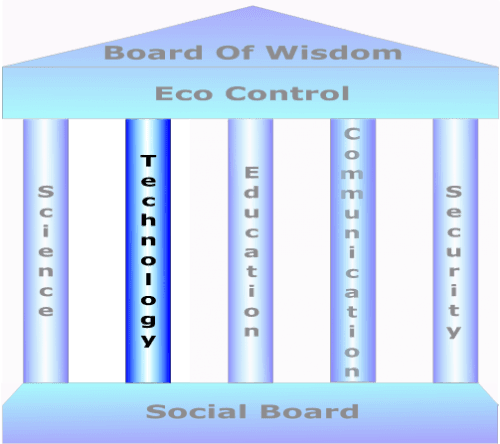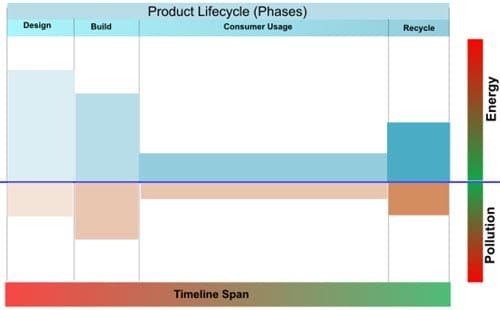- Last Updated on:
Recommended Pre Read: Science

As already mentioned in our topic on science, technology can be defined as the translation of scientific knowledge towards practical purposes or applications.
It includes the invention of the wheel to computers to nuclear bombs and many more.
Some people state that technology is evil and should be banned, but that makes no sense.
Technology in itself is not good or bad. It is what you do with it that matters.
Technology should be used wisely, and not as we do nowadays frequently, to maximize profit or as part of the mind control program.
Technology, like the other Utolantis temple pillars, is bound to operate within the limits as defined by Eco Control.
This means that not only, it may not bring any severe damage to our ecosystems, but also may not cause too much pollution.
In our current world dominated by materialism and ethically ruled by Social Darwinism, it is not that strange that many corporations will create and sell their products with profit maximization as their prime and (often) single goal and therefore will never be truly interested in the environmental impact of their products.
And when companies do turn ‘green’, please remember that this is just a pure Marketing strategy.
The manufacturing life-cycle:
Each product we manufacture whether it is a simple pencil or a high-tech space station, goes through 4 phases.
- Design (From dust .. )
- Build (manufacture)
- Consume (when people actually use the product)
- Recycle ( … to dust)
And the environmental impact of each lifecycle phase can be defined by merely 2 parameters:
- Energy
- Pollution
The Product Lifecycle chart:
Based upon these parameters, we can visualize any manufactured product.

In this illustration (Utolantis Product Lifecycle) we see on the x- axis (time) the 4 phases that each manufactured product goes through from Design, through Build, Consumer Usage and Recycling. During each phase we measure the amount of energy and pollution.
Note/Challenge:
For quantities like energy or power, we have a reliable unit to measure it.
For pollution however (for as far as I am aware of) we don’t have one. So this need to be designed and implemented.
What we see happening very frequently today, is that whenever we discuss products and it’s pollution, we do not take into account the full life cycle and/or the amount of pollution.
For example: The Electric Vehicle (EV)
When we promote the EV, we are told to believe that during the customer usage phase, there is no CO2 emission and therefor no pollution.
First of all, CO2 emission is no pollution. This is the scam hoax that we are supposed to believe.
Secondly, it is stated that since we use electricity instead of fossil fuels, there is also less pollution, which is again not true since to generate that electricity we use fossil fuels.
Next topics are the build and recycle phases of an EV, which are generating more pollution than modern diesel cars. This is mainly caused by the build and recycle phases of an EV battery.
Not even mentioning the fact that (sometimes) child labor is part of the lithium mining process, a process that is extremely polluting the environment.
Finally we do not have a good recycling process in place for the EV batteries. We frequently dump them as (chemical) waste.
Whenever we discuss products and their impact on the environment, we should always take into account their complete lifecycle and not just focus on 1 phase. A mistake that we often make.
Nesting:
Many products we make are compiled by other (sub)products.
Like a car where the engine, body or seats are produced by other manufacturers.
Manufacturing concepts:
As a replacement of the profit based manufacturing concept, Utolantis will adopt 2 alternative concepts, developed by third parties:
1) The Resource Based Economy
2) The Cradle to Cradle Concept
Although the Cradle to Cradle (C2C) concept is largely incorporated by the Resource Based Economy, it focusses in more detail on how we engineer our design phase with recycling as a primary focus.
Manufacturing in Utolantis:
As mentioned in our topic on Communities, not all communities will have industrial capacities. It depends on how much energy you can produce and how many residents you can handle. Only if you can produce enough energy, you can facilitate industrial capabilities.
Recommended Post Read: Education
